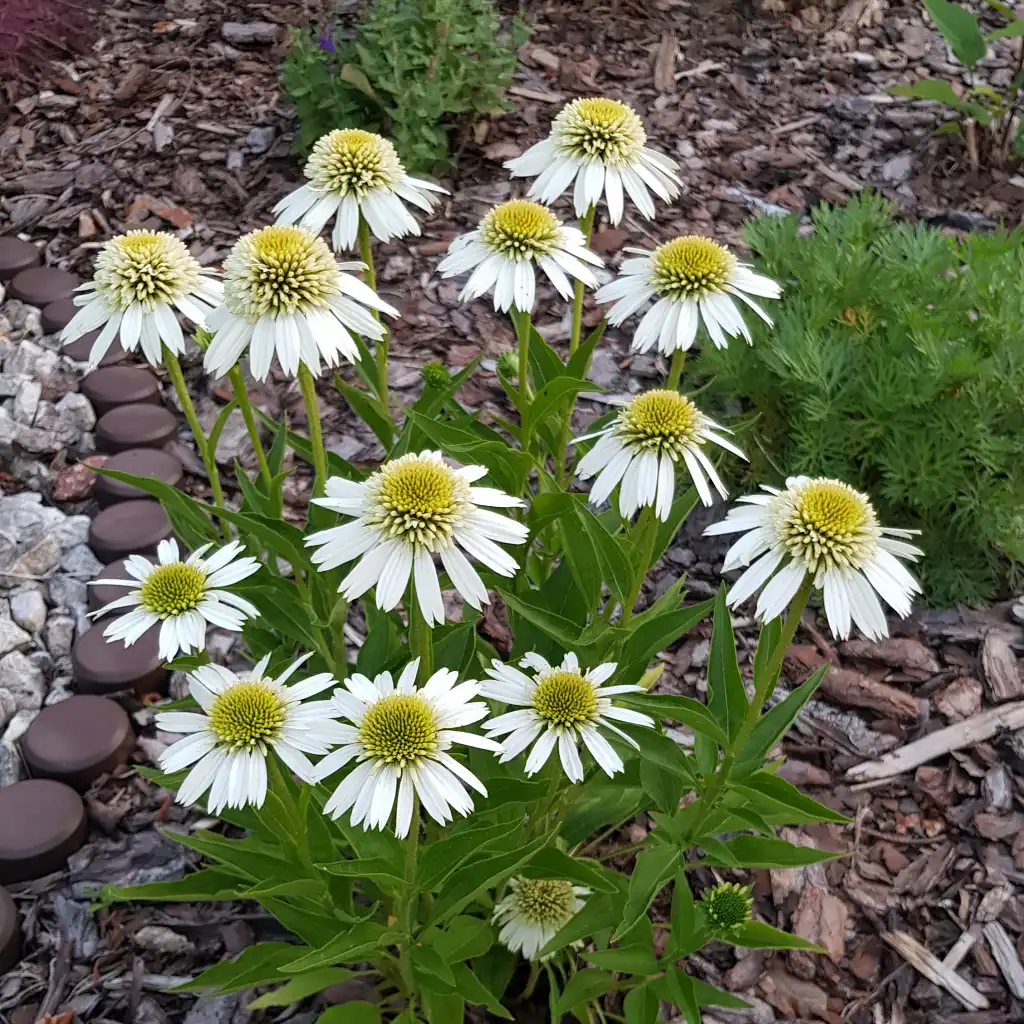The name Echinacea derives from the Greek word “ἐχῖνος” (echinos), which means “hedgehog” or “sea urchin.” This name refers to the characteristic, spiky center of the Echinacea flower, which resembles the shape and texture of hedgehog spines. This center, known as the flower cone, consists of numerous small florets closely packed to form a hard, convex structure. This feature distinguishes Echinacea from other garden plants and contributes to its unique appearance.
Echinacea is valued in both gardening and natural medicine. Known for its exceptional immune-boosting properties, it is used as a natural remedy supporting the body in fighting infections. In gardens, Echinacea serves a decorative role, attracting attention with its appearance and colors and drawing pollinators. Native to North America, Echinacea has been used for centuries by indigenous peoples as an anti-inflammatory remedy and for insect bites. Today, this plant is found in gardens worldwide, with its properties utilized in herbal medicine, cosmetics, and the pharmaceutical industry.
Medicinal Properties
Echinacea is widely appreciated for its versatile health benefits, making it a popular natural supplement that supports the immune system. It has immunostimulatory, antibacterial, antiviral, and anti-inflammatory effects, which makes it particularly valuable during the autumn and winter seasons, when respiratory infection risk increases.
Key Bioactive Components of Echinacea:
- Alkylamides – These compounds are responsible for stimulating the immune system. They act by activating immune cells, including macrophages and lymphocytes, which play a crucial role in protecting the body from pathogens. Alkylamides also reduce inflammation, making them helpful in relieving infections and supporting the body’s recovery.
- Polysaccharides – These are among the most important bioactive substances in Echinacea, with immunomodulatory properties. Polysaccharides stimulate immune cells to release cytokines, which are crucial in the defense against viruses and bacteria. This helps the body manage infections more effectively and shortens the recovery period.
- Cichoric Acid – This compound has strong antioxidant properties and supports the immune system. Cichoric acid acts as an anti-inflammatory agent, making Echinacea valuable for preventing and treating colds and seasonal illnesses. Additionally, it has antiviral properties, making Echinacea effective as an auxiliary remedy in fighting various infections.
- Flavonoids – Echinacea contains natural antioxidants like flavonoids that protect cells from damage caused by free radicals. Flavonoids strengthen the effects of other bioactive substances in Echinacea, supporting overall health and reducing inflammation.
Therapeutic Effects of Echinacea
Thanks to these combined components, Echinacea has broad applications in health prevention and therapy support. Its medicinal properties include:
- Immune Strengthening – Echinacea stimulates the immune system, helping the body better handle microorganisms that cause colds and flu. It acts at the cellular level, activating white blood cells and interferon production, which enhances the body’s ability to fight infections.
- Antibacterial and Antiviral Effects – Echinacea extracts inhibit the growth of certain bacteria and viruses, particularly those responsible for respiratory infections, such as rhinoviruses that cause colds. Echinacea can help reduce the risk of illness and shorten the duration of the disease.
- Anti-inflammatory Properties – Echinacea has anti-inflammatory effects, which make it helpful for treating skin inflammations, sore throats, and sinusitis. It is also commonly used for oral and gum infections.
- Post-infection Recovery Support – Thanks to the presence of alkylamides and polysaccharides, Echinacea supports the body’s regeneration after infections, strengthening its natural defense mechanisms.
Echinacea is now a valued ingredient in the pharmaceutical industry, dietary supplements, and cosmetics, thanks to its wide-ranging health effects. Its bioactive components effectively support the immune system, making it an ideal choice for health prevention and as a supportive remedy in treating various ailments. Below are the main applications of Echinacea in health and cosmetic products:
Echinacea in Dietary Supplements
Echinacea is a popular ingredient in dietary supplements, available in capsule, tablet, syrup, and liquid extract forms. Echinacea supplements are especially recommended during periods of increased infection risk, such as the autumn and winter seasons, when the body is more vulnerable to viruses and bacteria. The effects of Echinacea-based supplements include:
- Boosting Immunity – Regular use of Echinacea supplements can increase the body’s natural immunity, helping it to better cope with infections. For this purpose, it is recommended to start taking these products a few weeks before the flu season.
- Shortening Infection Duration – Echinacea has antibacterial and antiviral properties that help the body combat pathogens, reducing the duration of colds or flu and alleviating symptoms such as sore throat or nasal congestion.
- Supporting Body Recovery – Echinacea can be used as a natural aid during recovery, especially after illness, speeding up the return to full strength and aiding the body’s healing process.
Immune-boosting Preparations
Various Echinacea products are available, such as drinking solutions, lozenges, drops, and syrups, often fortified with vitamins (especially vitamin C and zinc) that enhance immunostimulatory effects. These products are typically intended for different age groups, including children, adults, and seniors who need extra immune support. They often contain extracts from the root or flowers of Echinacea, which are rich in alkylamides, polysaccharides, and flavonoids. When combined with vitamins and minerals, Echinacea creates an effective complex that helps the body combat pathogens.
Topical Products: Ointments, Creams, Gels
Echinacea is also widely used in cosmetics and skincare products due to its anti-inflammatory, antibacterial, and soothing properties. Echinacea extracts are found in:
- Ointments for Skin Conditions – With its anti-inflammatory and antibacterial properties, Echinacea-based preparations are used to treat minor wounds, burns, insect bites, and skin inflammations. Echinacea ointments accelerate skin healing and regeneration, while simultaneously alleviating pain and itching.
- Face and Body Creams – Echinacea is also found in cosmetics for problematic, acne-prone, and sensitive skin. Echinacea extract can help reduce redness, irritation, and blemishes. It is also valued for its moisturizing and regenerative effects, supporting skin cell renewal.
- Gels and Toners – These products are intended for oily and acne-prone skin, providing support in regulating sebum production and alleviating inflammation. Echinacea gels and toners help maintain skin health and reduce the risk of new blemishes.
- Mouth Rinses – With its antibacterial and anti-inflammatory action, Echinacea can be included in mouthwashes, supporting oral hygiene, protecting against bacteria, and soothing gum inflammation.
Thanks to its versatile properties, Echinacea is a valuable addition to health products as well as skincare cosmetics, supporting skin and mucous membrane health and condition.
Echinacea – photos of several varieties
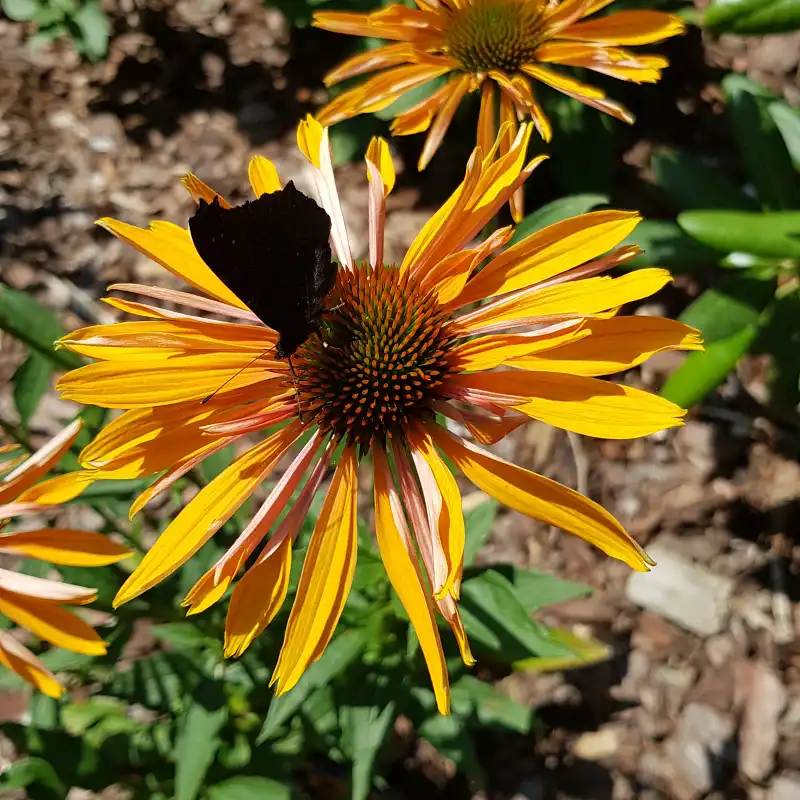
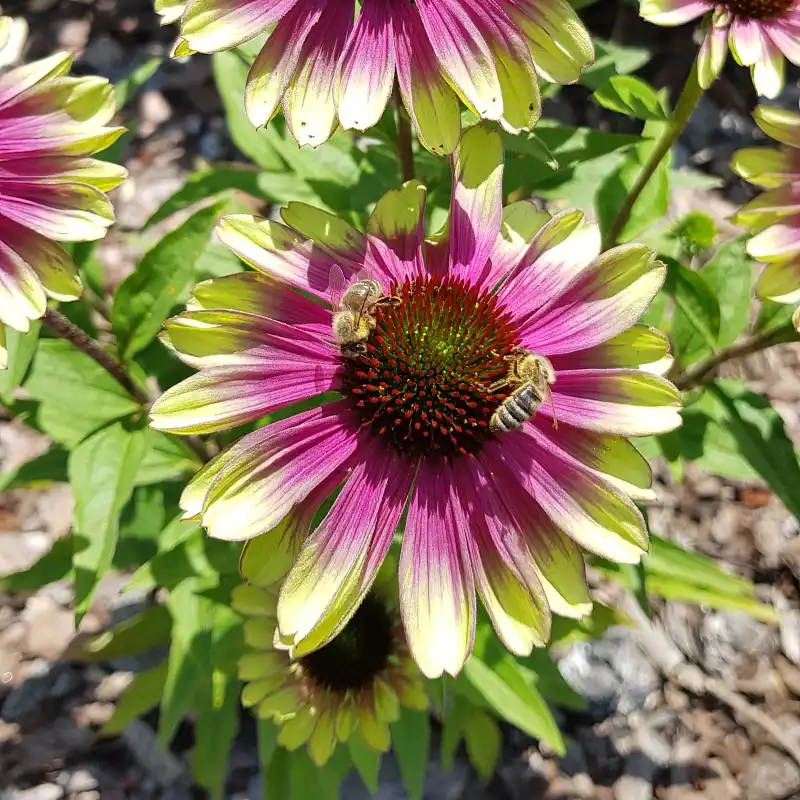
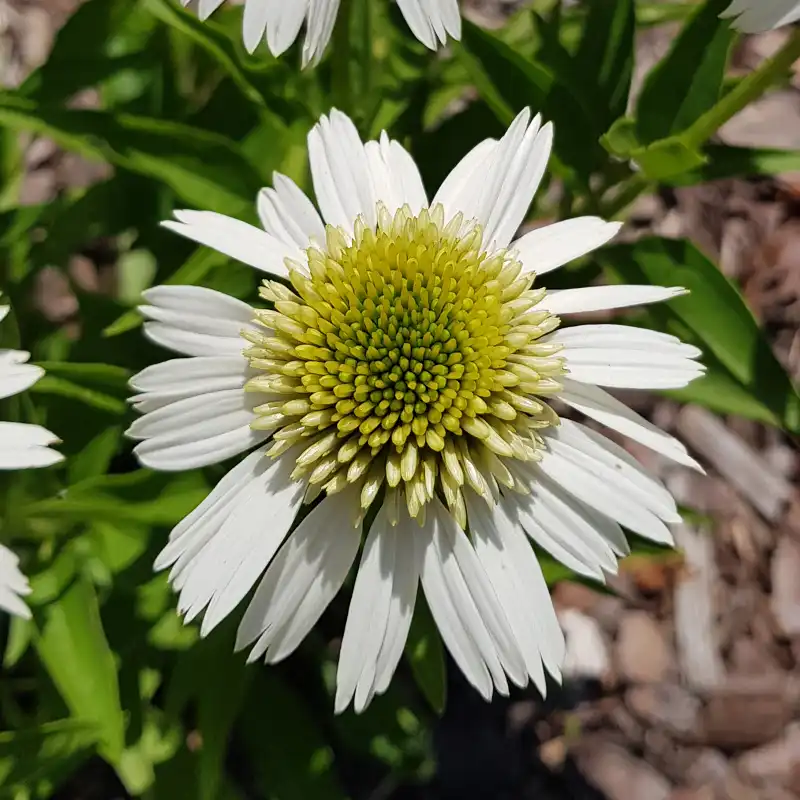

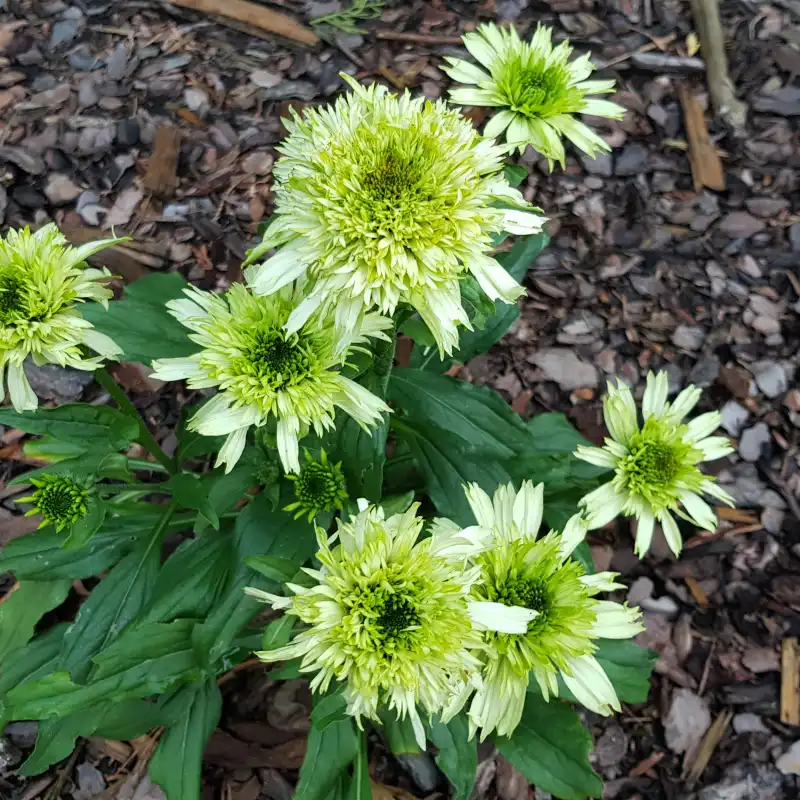


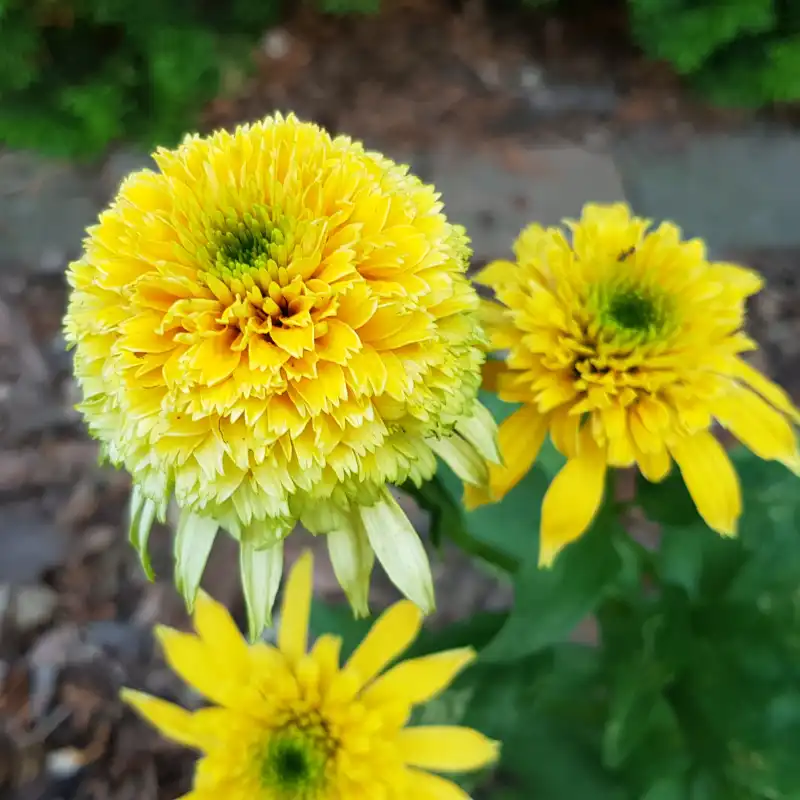

Growing Echinacea in Gardens
Echinacea is an easy-to-grow perennial plant popular for its decorative flowers and versatile applications. Resilient to harsh conditions, it thrives in home gardens, where it grows abundantly for many years, attracting pollinators and creating natural, eco-friendly spaces. Its intensely colored flowers, with distinctive centers and petals in shades of purple, pink, white, and yellow, bring a natural charm to gardens.
Popular Echinacea Species for Gardens:
- Purple Coneflower (Echinacea purpurea)
The most recognizable species, with large, intense purple flowers and a prominent, spiky center. Echinacea purpurea is hardy and well-suited to moderate climates, making it one of the most commonly chosen garden varieties. Its flowers can reach up to 15 cm in diameter, and the plant itself grows to about 1 meter tall. This species is prized not only for its appearance but also for its high content of bioactive compounds, making it particularly valued in natural medicine. - Pale Coneflower (Echinacea pallida)
This species has a more delicate appearance compared to Echinacea purpurea, with long, narrow, pale pink petals that elegantly droop downward. In its natural habitat, it grows on the dry prairies of North America, so it prefers sunny locations and well-drained soil. Echinacea pallida blooms in summer, attracting pollinators and bringing a light, subtle charm to the garden. It is also known for its health benefits, though it is used less frequently in the pharmaceutical industry. - Narrow-leaved Coneflower (Echinacea angustifolia)
This species is more compact and often grows to a shorter height than Echinacea purpurea, making it ideal for smaller gardens and flower beds. It has delicate pink flowers with a darker, intense center, and its leaves are narrow, stiff, and covered with fine hairs. Due to its high alkaloid and polysaccharide content, it is one of the most therapeutically valuable Echinacea species, commonly used in natural medicine and phytotherapy as an immune booster and to support infection treatment.
Site Selection
Echinacea grows best in sunny locations but can also tolerate light partial shade. A sunny spot promotes abundant flowering and intense flower colors. Due to its natural origin on the dry prairies of North America, Echinacea is accustomed to high levels of sunlight and performs well even in hot, dry summer periods. While drought-resistant, it blooms best when the soil is moderately moist.
Soil Requirements
Echinacea thrives in fertile, moderately moist, and well-drained soil with a slightly acidic to neutral pH (6-7). Heavy, clay soils can cause water retention around the roots, potentially leading to rot. If the garden soil is compact or heavy, adding sand or compost can improve its structure and drainage. Regular fertilization with organic fertilizers or compost also supports the plant’s growth and flowering.
Planting Echinacea
The best time to plant Echinacea is in spring or early autumn, allowing the roots to establish before winter. Before planting, it’s beneficial to prepare the soil by digging it over and adding compost to increase fertility and provide optimal conditions for the plants. A planting distance of 30-50 cm is recommended to give each plant room to grow and allow good air circulation, which helps prevent fungal diseases.
Caring for Echinacea
Though Echinacea is a relatively low-maintenance plant, regular care ensures healthy growth and abundant flowering:
- Watering – Echinacea is drought-resistant, but it’s a good idea to water it regularly during dry spells, especially in the first year after planting, when the root system is still developing. Watering in the morning or evening is best, avoiding wetting the leaves to help prevent fungal diseases.
- Fertilizing – Regular fertilization with compost or organic fertilizers provides Echinacea with essential nutrients, promoting intense blooming. In spring, a balanced multi-nutrient fertilizer can be applied.
- Pruning – After flowering, it’s advisable to remove the dried flower stalks to encourage re-blooming and allow the plant to focus energy on developing new flowers. In autumn or early spring, the entire plant can be trimmed to a few centimeters above the ground to facilitate regeneration.
Disease and Pest Resistance
Echinacea is resistant to most diseases and pests, making it an ideal choice for those seeking low-maintenance plants. However, it can be susceptible to fungal diseases, especially in humid conditions or when plants are too densely spaced. Providing the right site and avoiding over-watering can help minimize disease risk.
Flowering and Pollinator Attraction
Echinacea blooms from late summer to early autumn, and its flowers attract bees, butterflies, and other pollinators, making it a valuable addition to environmentally friendly gardens. Additionally, its seeds serve as food for birds in winter, so it’s worth leaving some of the faded flowers to support birds during the winter months.
Wintering
Echinacea is frost-resistant and tolerates winter well in moderate climates. It doesn’t require special covering in winter, though young plants can be lightly covered with mulch to protect them from sudden temperature changes. In spring, the mulch can be removed, and the flower bed cleared of dead leaves and plant debris.
Jeżówka to łatwa w uprawie bylina, ceniona za ozdobne kwiaty i wszechstronność. Odporna na trudne warunki, dobrze sprawdza się w przydomowych ogrodach, obficie rosnąc przez wiele lat, przyciągając zapylacze i tworząc naturalne, przyjazne dla środowiska przestrzenie. Jej jaskrawo kolorowe kwiaty z charakterystycznymi środkami i płatkami w odcieniach fioletu, różu, bieli i żółci dodają ogrodom naturalnego uroku krajobrazu.
Popular Echinacea Varieties for Gardens:
Echinacea purpurea ‘Magnus’
A classic variety with large, intensely pink flowers and an orange center, highly popular in gardens.
Echinacea purpurea ‘White Swan’
A white Echinacea with a slightly greenish center, ideal for more neutral compositions.
- Echinacea purpurea ‘Green Jewel’
Known for its greenish flowers and light-green center, it pairs well with ornamental grasses.
- Echinacea purpurea ‘Sunset’
An intense orange variety, creating beautiful contrasts with pink and yellow varieties.
- Echinacea ‘Cheyenne Spirit’
A multicolored variety, with blooms in shades ranging from yellow through orange to red. Each plant may bloom in a different color, making this variety unique.
- Echinacea purpurea ‘PowWow Wild Berry’
This variety features intensely raspberry-colored flowers, drawing attention with its deep hue.
- Echinacea purpurea ‘Flame Thrower’
A unique two-tone variety, combining yellow petals with red-orange petal tips.
With a broad palette of colors and striking form, Echinacea can serve as a garden focal point or a harmonious addition to vibrant border compositions. Each color can be represented as a tile on your website, helping users envision how each variety might enhance their garden’s aesthetic.
